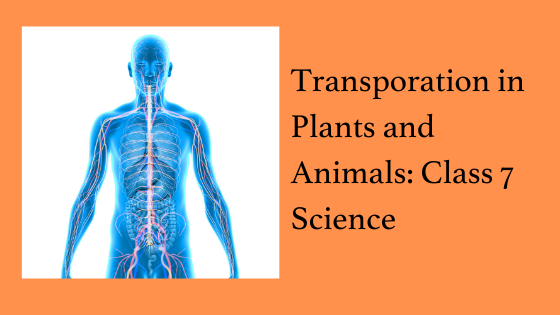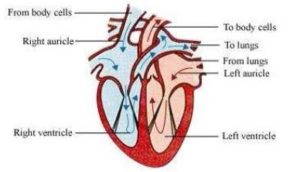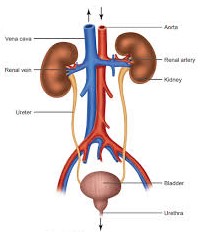
Ques 1: What will happen if the xylem tissue gets damaged in a branch of a tree?
Ans 1: If xylem tissue gets damaged then important substances like water and minerals will not be transported. Xylem is responsible for the transportation of water and minerals in a plant. The plant will not be able to survive if the tissue gets damaged.
Ques 2: Define Transpiration
Ans: The loss of water from the plants in the form of vapours is known as transpiration. The excess water evaporates and is released in the air.
Ques 3: Name three types of blood vessels
Ans 3: Three types of blood vessels are Capillaries, Arteries, and Veins
Ques 4: State any two functions of the blood.
Ans 4: Blood helps in the transport of oxygen to the tissues
It also helps in the transportation of nutrients like glucose, amino acids and other substances to different parts of the body.
Ques 5: Define the term Pulse Rate
Ans 5: Pulse rate denotes the number of beats taken by our heart in a minute. On average, the human heart beats 60 to 100 times per minute.
Don’t Miss: Electric Current and Its Effects Solutions Class 7 DAV
Part E Transportation in Plants and Animals: DAV Science Solutions
Ques 1: Briefly explain the transport of water and minerals in plants
Ans 1: Transportation of water and mineral in plants take place through xylem tissue. Xylem has tracheids and vessels which help in transportation. Xylem tissues help in the movement of water and minerals from roots to the leaves of plants.
Ques 2: Describe in brief the function of the human heart

Ans 2: Heart is responsible for transporting blood to different parts of the body. The blood carries various substances with itself. The human heart has 4 chambers in it namely Right Atrium, Right ventricle, Left atrium, left ventricle. The upper two chambers are known as the right atrium and left atrium, the lower ones are known as the left ventricle and the left atrium.
Deoxygenated blood enters the right atrium. Blood from the right atrium enters the right ventricle, from where the blood is passed to the lungs for purification. After that, the oxygen rich blood from the lungs enters the left atrium. Then the blood moves to the left ventricle which pumps the blood to different parts of the body. So, the continuous series of contractions and expansion in the heart is responsible for the transfer of blood to all parts of the body.
Ques 3: State the functions of the three types of blood vessels
Ans 3: The three types of blood vessels which function in the human’s body are: Veins, Arteries, and Capillaries. Arteries carry blood away from the heart. It carries nutrient-rich oxygenated blood to different parts of the body.
Veins bring back blood from body parts to the heart for purification.
Capillaries connect the veins with arteries. They help in movement of nutrients from the blood to the cells of the human body. They also help in the transportation of wastes back to the blood from the cells.
Ques 4: Give one function each of RBC, WBC, and platelets
RBC stands for Red blood cells. They carry oxygen and CO2 to and from the body parts.
WBC stands for White blood cells are responsible for the immunity of our body. They help us to fight different diseases.
Platelets are responsible for blood clotting. Blood clotting is important at the time of injury to stop the flow of excess blood from the body.
Ques 5: Draw a neat and well-labeled diagram of the human excretory system.
Ans 5:


Leave a Reply